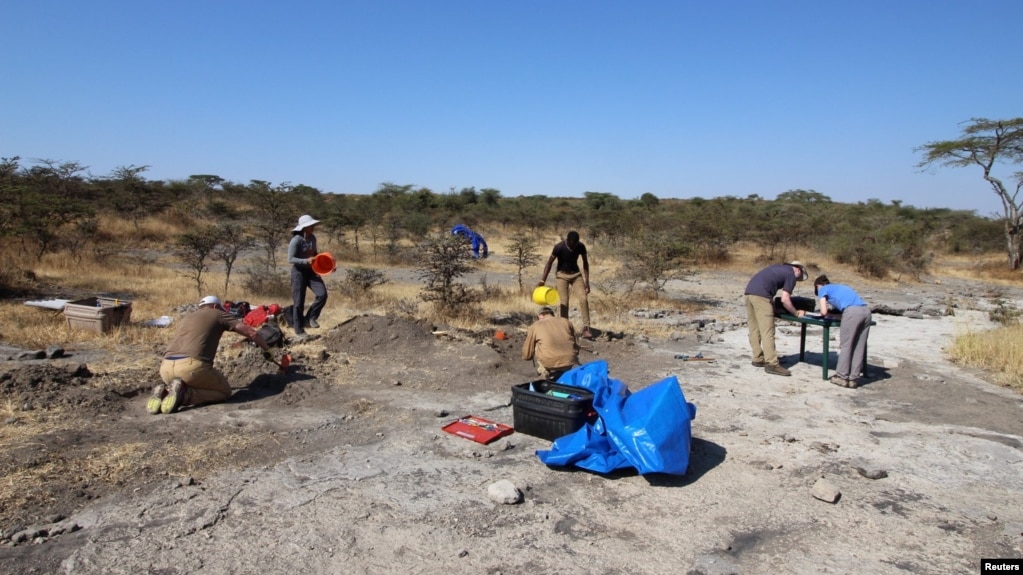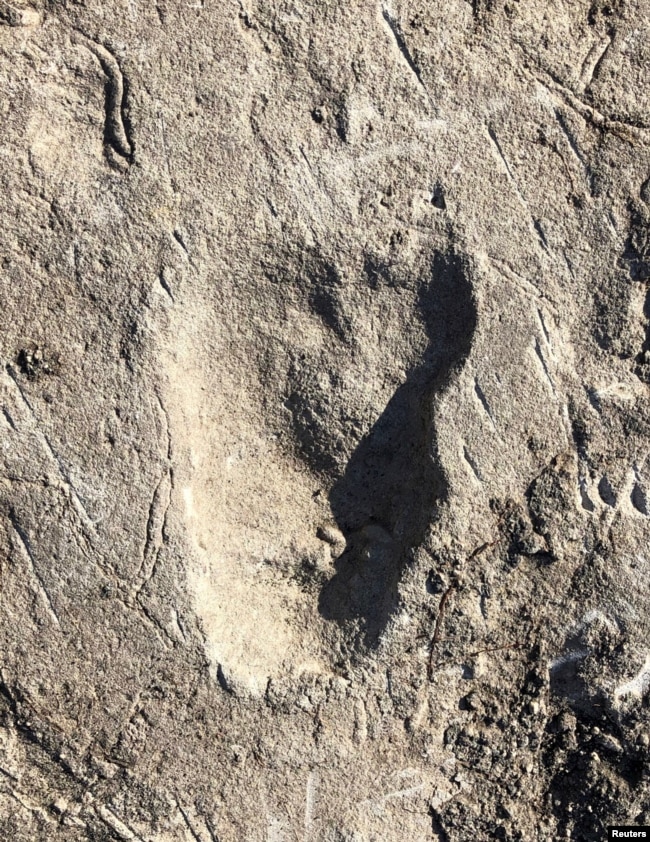New Evidence Found of Early Human Ancestors Walking Upright

Scientists are taking a second look at footprints made in ash from a volcano millions of years ago in modern-day Tanzania.
The footprints were first found in the 1970s. Scientists started taking another look at them in 2019. They were surprised to discover that the footprints in the ash were made by two different species.
Two sets of tracks were discovered in 1976 and 1978. At the time, scientists believed they were left by a human ancestor and another creature, like a bear. However, now the scientists believe the footprints may have been made by two different species of human ancestors.
Ellie McNutt of Ohio University is the lead writer of the study published in Nature. McNutt noted the tracks are the first evidence of walking on two feet in the human fossil record.
Jeremy DeSilva of Dartmouth College co-wrote the study. DeSilva said the footprints show there were different ways of walking upright at that time. That is because the set of footprints discovered in 1978, also from the area, show a different way of walking. The footprints found in 1978 have been linked with the human ancestor known as Australopithecus afarensis. That is the family of early humans that ‘Lucy’ belongs to. Lucy is a famous group of bones found in Ethiopia in 1974.

Years ago, scientists did not think the footsteps found in 1976 were connected to humans because one foot crossed over the other as the being walked. This is called “cross-stepping,” DeSilva said. He called it “peculiar.”
The scientists believe the being which made the newly found steps was about one meter tall. But they can only guess about other qualities it might have had.
DeSilva said it is possible the steps were taken by an unknown human ancestor or it could have been one already known.
Scientists say the ancestors of modern humans separated from chimpanzees between 6 and 7 million years ago. Walking on two feet was an important evolutionary step. So, scientists are excited by the new finding.
Changes in the bones of the hips, spine, feet and legs permitted human ancestors to walk upright. This happened millions of years before modern human beings, known as homo sapiens, appeared 300,000 years ago.
Scientists think the changes might have happened so that early humans could better see dangerous animals in the African grasslands.
Words in This Story
ash – n. the remains of something that has been burned up
species – n. a group of animals or plants that are similar and can produce young animals or plants
tracks – n. (pl.) a mark left on the ground by a moving animal, person, or vehicle — usually plural
fossil – n. something (such as a leaf, bones, or a footprint) that is from a plant or animal which lived in ancient times and that has become mineralized into rock
footprint – n. the mark left by someone’s foot or shoe
peculiar – adj. not usual or normal
evolution – n. a theory that the differences between modern plants and animals are because of changes that happened by a natural process over a very long time